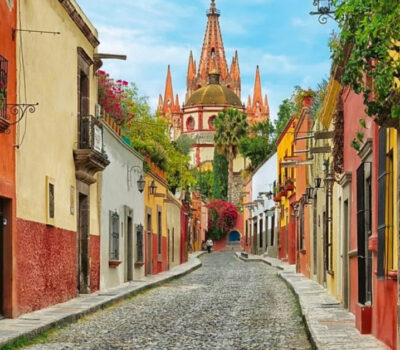The official beginning of the whale watching season has begun in Puerto Vallarta, even though the whales have been arriving earlier each year for several years now.
With the season running from December 8 – March 23, the race is on for applicants who wish to offer whale watching tours in the bay to get their permits, which in previous years have reached up to 170 issued permits for one season.
Operators are obligated to meet tough boat standards and operation standards. Tours are restricted to 30 minutes each in a zone and no more than four boats within a zone, according to the city. A zone is a 240 meter radius. However, with these standards set, the city only has three individuals on staff available to patrol the waters three days per week to enforce regulations.
With an understaffed agency incapable of overseeing the operations of these licenses, the question should be asked if we are putting the whales at danger with more permits than can be regulated in the bay, or unable to monitor those without permits.
Many licensed operators complain that the problem is unlicensed boats and private individuals not familiar with regulations that are getting too close to whales and other boats, as well as harassing the whales and causing unnecessary stress to the mammal.
At least 13 million people worldwide go whale watching every year and it is an industry estimated to be worth $2.1 billion USD, according to the International Fund for Animal Welfare (IFAW).
Dr David Lusseau, from the Institute of Biological and Environmental Science at the University of Aberdeen, says that in the short term a boat interacting with whales can disrupt their activities, like stopping them foraging for food or resting, and this occurring once or twice really has no impact. However he adds that in heavy tourist areas where whale watching is a popular attraction, like Puerto Vallarta, the interruptions can happen more frequently and cause female to stop producing milk for their calves and decrease the survival rates for the young.
The Whale and Dolphin Conservation Society (WDCS) says that the consumer can help by making sure whatever tour company they choose follows the WDCS standards to ensure as little impact as possible is brought to the whales during a tour. The WDCS says you should look for these practices from your tour company.
Put the animals first
This means careful and responsible boat handling. It is sometimes easy to forget that we are uninvited guests in the whales’ world and we are privileged to see them. We have a responsibility to cause as little disturbance as possible. It is always tempting to try to get as close as possible to the whales, especially if you are trying to take photographs, but remember that these are truly wild animals and constant disturbance can seriously affect their ability to feed, rest and rear their young. Imagine how you would feel if a coachload of tourists descended on your living room and expected to photograph your family having Sunday lunch! In fact, careful and considerate behavior around the whales usually results in much longer encounters with them, and the added bonus of observing more interesting and natural behavior.
Follow regulations governing WW in their region
In some parts of the world, there are specific regulations governing WW, (specifying minimum approach distances etc) with legal enforcement. However, in many other areas, there may be a code of conduct, but no means of enforcing this, relying on the goodwill of participating operators. Worse still, there are areas where WW is a “free for all” with nothing to prevent irresponsible operators from continually harassing the whales and dolphins in an attempt to get their passengers close to the whales as quickly as possible.
It is a good idea to find out whether any regulations or voluntary codes apply in the area before you get on the boat. Ask the operator questions to show that you are aware of regulations and don’t be afraid to speak up if you feel that a boat captain is not behaving responsibly.
Have adequate safety provisions
A safe whale watch boat should have: an experienced skipper; crew who are well-trained in first aid and rescue skills; appropriate safety equipment (such as VHF radio, good quality lifejackets, flares, inflatable lifeboat, food and water reserves, etc); appropriate insurance; a maximum number of passengers; a tried and tested emergency drill, and a properly prepared safety briefing for all passengers.
Offer high standards of customer care
This means honest advertising of what passengers can expect from the trip. This may include offering a “sightings success rate” but this should be realistic as, with few exceptions, it is virtually impossible to guarantee sightings on every trip. Every aspect of the trip should be professional, which means a fair ticket price; punctual departures; the vessel should be clean, and the crew friendly and polite. If a trip has to be cancelled due to adverse sea and weather conditions, find out whether there is a policy of refunding fares or offering free places on a future trip.
Have an on-board naturalist-guide
This is really important and can make the difference between a “run of the mill” trip and a really memorable experience! Choose a vessel which offers some form of educational commentary – preferably both before and during the trip. The larger boats may employ a trained naturalist and this is always preferable, but on the smaller boats, the skipper may also act as the guide.
A good guide will give you a lively and entertaining commentary on the various species of whales and dolphins you are hoping to see, as well as the other marine wildlife in the area. They will also be knowledgeable about any threats facing local marine wildlife or their habitat. It can be difficult to positively identify a whale or dolphin which is some distance away and here, the trained eyes of the guide will help you to identify that “small black fin to starboard”! The guide will also be able to interpret the behavior of the whales and dolphins being observed and this can really add to your understanding and enjoyment of the experience. A really well-rounded commentary may also include slides, posters or maps; recordings of whale songs, and the guide may even pass around samples of baleen, a jawbone, or teeth, for passengers to examine.
Carry out research
This isn’t an essential ingredient for a good W/W trip, but there are several advantages in having a researcher onboard. On some boats, the naturalist-guide may also use the vessel as a platform for their research activities, such as logging sightings and photo identification studies. Sometimes passengers may be able to assist with simple studies. This adds a new dimension to the experience and is also an excellent way of learning and feeling more involved. A good operator will recognize the need to find out as much as possible about the whales, dolphins and other wildlife in the area. Ongoing research can benefit their business by providing a continually expanding source of knowledge on the local whales and their daily and seasonal movements. Local research institutions may also benefit from receiving a percentage of profits from the WW business.
The official beginning of the whale watching season has begun in Puerto Vallarta, even though the whales have been arriving earlier each year for several . . .











